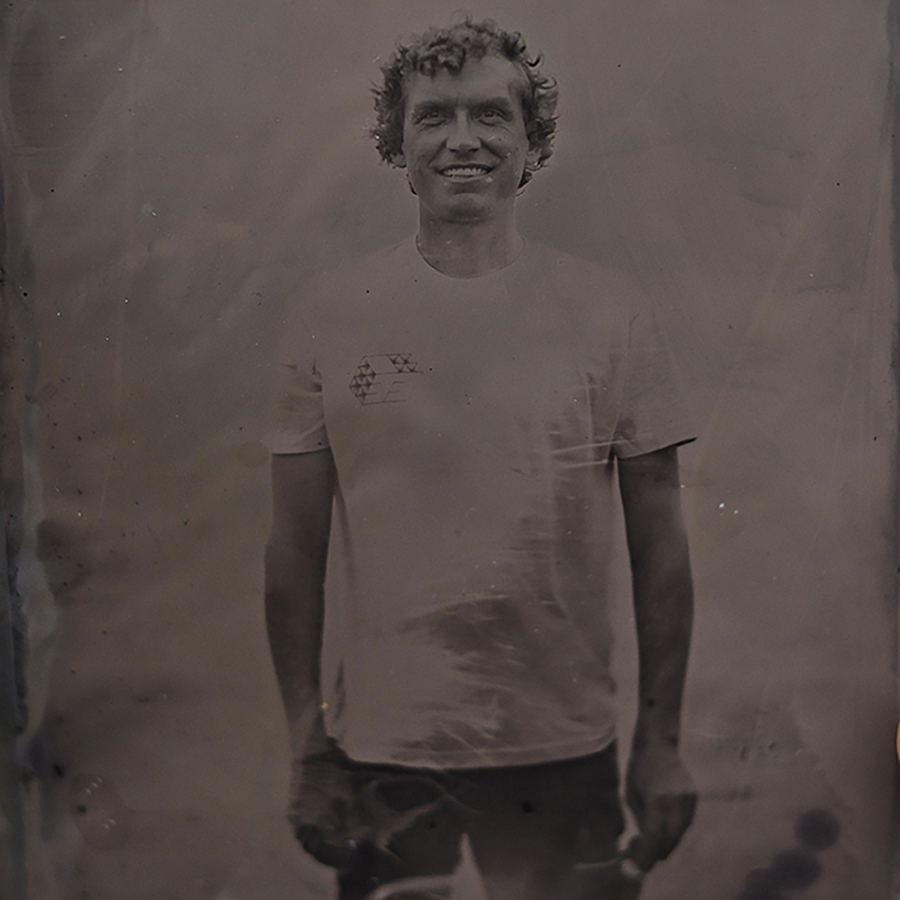3 October 2017
Shane Anderson finds hidden meaning in portraiture
By Stephanie Thompson

Name: Shane Anderson
Courses: History of Photographic Portraiture
Portraits have been around for as long as there have been people, but have you ever thought about the hidden meanings and purpose behind portraiture? From monarchs and tycoons seeking to impress to teens carefully staging Instagram selfies, portraits offer an intriguing look our history and society through the way we see ourselves—and wish others to see us. Artist and educator Shane Anderson, joins UC San Diego Extension this year, will take students through the history of portraiture in a new course.
Shane’s work explores issues related to landscape use and the ways in which it is perceived and utilized. It investigates our relationship to our environment, and ways in which we occupy, build, and shape the contemporary landscape. Raised in Montana, he now lives and works in San Diego.
How did you get started in photography?
As an undergraduate student in Montana and then at Long Beach State, I was studying art history and studio art, and was working on printmaking. I started incorporating photography into my prints and soon realized it was the image that held the content I was investigating, so I took a photography class and never turned back.
Your photography seems to be directly affected by your physical surroundings.
My work over the past few years has focused on issues related to landscape use and how it is perceived and utilized. I have been investigating the ways in which we invest in and occupy space, trying to gain a deeper understanding of how landscape can function as an index of the relationships between social groups and their environments. Landscape representations are attitudes of awareness, and how we interpret them confronts us with shared visions of ourselves and of the world. The spaces in which we live now show evidence of the rapid pace and multiplicity of changes that have occurred recently. Our natural, rural and urban environments have undergone dramatic upheavals, especially in Southern California.
My work deals with ideas about today’s socio-systemic world in which land values shape urban geography, building design, and eventually the lives of people. The images reflect the incongruous relationship today between people and their environment. I am capturing the effects of society on the landscape, and the ways in which landscape has influenced the advance of civilization.
What do you most enjoy about your profession?
As an artist... looking and exploring. As an educator, I really enjoy working with the students and am inspired daily as I see them grow and develop as artists.
What advice would you give someone looking to enter this career field?
Photography is expensive and not as easy as you think. Get ready or get out now!
How is your field changing?
Photography always has been evolving due to its connection to technology. With cell phone cameras, digital technology, and the internet, the uses and expectations of photography have changed and these changes have shaped our society and our identities over the last couple of decades. Other than that, it has not changed too much over the last century.
What do you look forward to most about teaching for Extension?
This is my first time teaching with Extension, and I am looking forward to working with a great network of talented photographers.
What would you like students to get out of taking your class?
We’ll be looking at the historic origins of portraiture, beginning with painting before we get to photography. In addition to formal portraits, advertising, news, and more, we’ll look at our own portraits as well and discuss selfie culture. I hope they reach a deeper understanding of the history of photography, portrait photography in this case, and its functions and uses in society today. I also hope they come out with a firm understanding of visual literacy.
Learn more about the photography courses and programs at Extension on our website, or contact the department at ahl@ucsd.edu / (858) 534-5760.